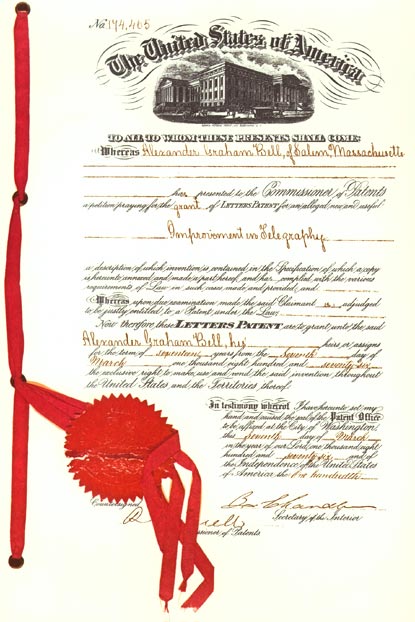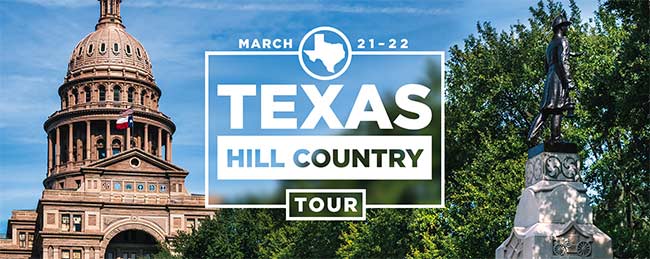
“So God created man in his own image, in the image of God created he him; male and female created he them and God blessed them, and God said unto them, Be fruitful, and multiply, and replenish the earth, and subdue it: and have dominion over the fish of the sea, and over the fowl of the air, and over every living thing that moveth upon the earth.”
—Genesis 1: 27, 28
The Birth of Alexander Graham Bell, March 3, 1847
 t the beginning of the 21st Century, American historian Arthur Herman published a book entitled How the Scots Invented the Modern World: The True Story of How Western Europe’s Poorest Nation Created Our World & Everything in It. As lofty titles go, this is hard to surpass. He gives more than passing respect to the “great man theory” of history, citing the lives and ideas of men whose works during the “Scottish Enlightenment” and beyond made the modern world. Not all of them remained in Scotland to accomplish their ends. Alexander Graham Bell’s genius was unleashed on the world from America. t the beginning of the 21st Century, American historian Arthur Herman published a book entitled How the Scots Invented the Modern World: The True Story of How Western Europe’s Poorest Nation Created Our World & Everything in It. As lofty titles go, this is hard to surpass. He gives more than passing respect to the “great man theory” of history, citing the lives and ideas of men whose works during the “Scottish Enlightenment” and beyond made the modern world. Not all of them remained in Scotland to accomplish their ends. Alexander Graham Bell’s genius was unleashed on the world from America.

Alexander Graham Bell (1847-1922)
A stone inscription on South Charlotte Street in Edinburgh, Scotland marks the birthplace of Alexander Bell. Although his parents neglected to give him a middle name, he badgered them for one until they relented on his 11th birthday, March 3, 1858. He chose Graham in honor of a friend from Canada. Alexander and his two older brothers attended Edinburgh high school and the Presbyterian Church until their deaths from tuberculosis at the ages of 19 and 25. Alexander went on to study at the University of Edinburgh. His father developed a “visible speech system” he hoped would prove a universal speech prototype for a phonetic alphabet. Speech pathology was never far from Aleck’s mind since his mother lost her hearing and his future wife also became deaf.

Alexander Melville Bell (1819-1905) and David Charles Bell (1817-1902),
Alexander Graham Bell’s father and uncle, respectively, who were both elocution and speech scholars, teachers, and authors
|
|

A chart of “Visible Speech” for English phonetics, a system developed by
Alexander Melville Bell
|
After leaving school at fifteen, Alexander lived with his grandfather in London, learning to speak clearly and distinctly; elocution became both his father’s and grandfather’s passion. His father published several books on elocution, one of which sold more than a half million copies in the United States alone. Young Aleck taught himself to play the piano with remarkable skill, conducted various kinds of scientific experiments with his best friend, and learned to use his voice in unique ways, including a kind of ventriloquism with which he entertained family guests. Eventually young Bell could decipher “visible speech” in Latin, Gaelic, and Sanskrit, and pronounce passages without prior knowledge of the pronounced language.

The Bell Homestead National Historic Site, Brantford, Ontario, Canada also showing a monument dedicated by Queen Elizabeth II in 1997

The carriage house on the Bell homestead used by Bell in his early experiments
|
In 1865 the Bells moved to London for continuation of their elocution demonstrations, and for Aleck to attend university, where he continued experiments with electricity and voice. London was the epicenter of the industrial revolution and the air was filled with coal dust smoke, dampness, and severe overcrowding. The two eldest Bell brothers contracted TB and other family members fell ill, including Aleck. The brothers died and the surviving Bells moved to Ontario, Canada, hoping a more salubrious climate would bring better health. In their new home, Aleck’s health improved, he learned the Mohawk language, and transcribed it into “visible speech symbols,” for which he was made an honorary chief. Bell also continued his experiments transmitting sound along a wire by modifying a melodeon.

A portion of the Bell Homestead’s parlor, restored to the Victorian era style maintained by the Bells, using many of their original furnishings and artifacts, including their melodeon, seen in front of the window at center
Alexander Graham Bell moved to Boston to train the teachers of the Boston School for the Deaf using the Visible Speech System invented by his father, to be used to help “connect the deaf and hard of hearing to the hearing world.” Within a year he established a private practice in Boston, attracting students from all over New England. He encouraged speech therapy and lip reading over sign language, thus furthering the ongoing battle with the convinced sign language advocates for teaching the deaf. One of his earliest students was Helen Keller. Along with teaching, the brilliant Scotsman continued his experiments with the “harmonic telegraph.”

Bell, top right, provided pedagogical instruction to teachers at the Boston School for Deaf Mutes, 1871; throughout his life, he referred to himself as “a teacher of the deaf”

Thomas Watson (1854-1934) was an assistant to Alexander Graham Bell, notably in the invention of the telephone in 1876
|
In 1874 he told his father in their house in Ontario that “if I could make a current of electricity vary in intensity precisely as the air varies in intensity during the production of sound, I should be able to transmit speech telegraphically.” Other scientists were working on similar concepts but “as usual . . . with Scottish scientists and engineers, it was his ability to organize and systematize the ideas of others, and beat them to the punch, that ultimately paid off.” He and his friend Thomas Watson devised a telephone which transmitted sounds over a wire, and filed for a patent on St. Valentine’s Day of 1876. His leading competitor was two hours behind in filing! On March 10, Alexander Graham Bell spoke to his friend Watson for the first time, in a different room over a wire. Within two years President Rutherford B. Hayes installed the first telephone in the White House.

Bell’s patent for the telephone

Alexander Graham Bell making the first
long-distance telephone call from
New York to Chicago in 1892
|
The telephone “permitted direct, personal, long-distance communication, not just station–to-station [like the telegraph], but person-to-person.” Aleck set up the National Bell Telephone Company in 1877 to manufacture his invention. He had to contend with six hundred lawsuits from the numerous competitors (including Western Union and their resident genius, Thomas Edison) who were late to the patent office or claimed precedent of ideas. Within seven years Alexander Graham Bell had earned more than a million dollars, moved to Washington D.C., built a magnificent home, and continued spending hundreds of thousands of dollars on new research for his work with the deaf, and improving the telephone. Bell Telephone and AT&T helped launch the 20th Century. The rest is history.

The Bells lived increasingly at their estate in Beinn Bhreagh—meaning “Beautiful Mountain” in Scottish Gaelic—Victoria County, Nova Scotia from about 1888 until his death in 1922, initially only in the summer and then later often year-round. Its landscape, climate, and Scottish traditions and culture were reminiscent of his birthplace in Edinburgh, Scotland.
While Bell was not in the wealth category of fellow Scot Andrew Carnegie or the other industrial giants like Henry Flagler, John Rockefeller, and J. P. Morgan, he had successfully joined the club of brilliant entrepreneurs of the Industrial Age, improved the lives of millions with telephone technology, and invested heavily in improving the lives and abilities of the deaf. Another Scot had taken seriously the biblical injunction to have dominion over the creation, and became an analog creator himself.
*Quotes taken from How the Scots Invented the Modern World by Arthur Herman.

Alexander Graham Bell, his wife Mabel, and their daughters Elsie May Bell (1878–1964) and Marian “Daisy” Hubbard Bell (1880–1962) circa 1885

Image Credits:
1 Alexander Graham Bell (wikipedia.org)
2 Alexander Melville Bell & David Charles Bell (wikipedia.org)
3 Visible Speech chart (wikipedia.org)
4 Bell Homestead (wikipedia.org)
5 Bell Carriage House (wikipedia.org)
6 Bell Homestead Parlor (wikipedia.org)
7 Boston School for Deaf Mutes (wikipedia.org)
8 Thomas Watson (wikipedia.org)
9 Telephone Patent (wikipedia.org)
10 Long-distance call (wikipedia.org)
11 Beinn Bhreagh (wikipedia.org)
12 Bell Family, 1885 (wikipedia.org)
|







